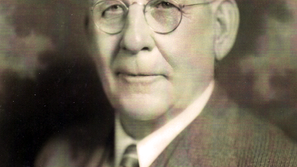Editor's Corner: Not all that glitters is gold
- Chuck Doud
- Apr 13, 2017
- 3 min read
Gov. Jerry Brown is very happy with the big new tax measure passed by all the Democrats and one Republican (our own State Sen. Anthony Cannella) in the Legislature.
Brown says he is sure those new taxes and fees will guarantee improved roads in California, but don’t be too sure.
Even if the money rolls in as expected and we are able to pave the roads with solid gold and industrial diamond dust, don’t get your hopes up.
California has a terrible record of maintaining its existing highways and building new ones, according to the Reason Foundation’s Annual Highway Report.
That report says California is 45th among states ranked for cost-effectiveness of their highway systems. That includes the costs of repairs and new construction, fatality rates, and deterioration rates of pavement, among several measurements. That means 44 states do a better job of using their road money, and building and maintaining roads, than California does.
It also means California has wasted horrendous sums of the tax money its citizens have poured into its road and highway coffers.
California, along with Rhode Island, Massachusetts and Florida, spends money on road construction like Russians spend money on vodka. These highway high rollers fork over on average $500,000 per lane mile. South Carolina and West Virginia, on the other hand, spend just $39,000 per lane mile on average. And guess whose roads are ranked higher in quality: S.C. and W.V., of course.
The national average cost for a lane mile of road construction is $192,371.60, according to the Federal Highway Administration.
California is ranked among the worst when it comes to an assessment of the percentage of roads that are in poor to mediocre condition — 35.3 percent. Only New Jersey is worse, at 36.3 percent, according to the Federal Highway Administration.
Does California have enough roads? Compared with other states, no.
For example, Texas, with 27,400,000 people, has 675,580 lane miles of roads. That’s an average of .24 lane miles of road per person. California, with 37,511,000 people, has 394,608 lane miles of roads, or only about .004 lane miles of road per person.
California’s new taxes won’t buy much in the way of new roads. The money will be spent mainly on repairs. While some new roads will be built, most already will have been planned and put into the financing stream, so we could have had them without the new taxes.
Here’s something that will make you stew: California already has the nation’s highest gasoline taxes, at 69 cents a gallon, according to GasPriceWatch.com. It also has the highest diesel fuel tax, at 79.5 cents a gallon. Absolutely no other state has more money flowing into its highway coffers than California already has. And now, it will have more.
The Bay Area and Los Angeles area traffic jams will not be eased by any of this new money.
There’s a good chance, too, that some of the $50 billion or so of new taxes that will be raised over the next decade will be sunk into the high-speed rail system, which won’t do much to improve the roads or ease the coastal communities’ traffic jams.
However, the high-speed rail line could help the Bay area and San Joaquin Valley in one respect — making it possible for commuters to work in the Bay Area and live in the Valley, and have a reasonable commute time.
But don’t expect the roads we drive on every day to get any better any time soon. The money to keep them up has already been available, paid over by you (if you are a motorist) but those funds are used too often on something else.
Yes, the new legislation so eagerly passed last week includes an oversight commission to keep the money from being misspent. But why would that even be necessary unless misspending already had been going on? Duh!
Maybe the real solution would have been to fire all the California transportation people who have blown all this money and hire the ones from South Carolina and West Virginia instead.


























Comments